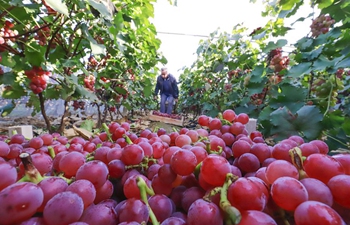CHICAGO, Sept. 26 (Xinhua) -- A study conducted by researchers at the University of Illinois (UI) has determined how damaged liver cells repair and restore themselves through a signal to return to an early stage of postnatal organ development.
Using a mouse model of a liver severely damaged by toxins, the researchers compared injured adult liver cells with healthy cells present during a stage of development just after birth, and found that injured cells undergo a partial reprogramming that returns them to a neonatal state of gene expression.
The team discovered that fragments of messenger RNA, the molecular blueprints for proteins, are rearranged and processed in regenerating liver cells in a manner reminiscent of the neonatal period of development.
This phenomenon is regulated through alternative splicing, a process wherein exons, expressed regions of genes, are cut from introns, intervening regions, and stitched together in various combinations to direct the synthesis of many different proteins from a single gene. These proteins can have different cellular functions or properties.
"We found that the liver cells after birth use a specific RNA-binding protein called ESRP2 to generate the right assortment of alternatively spliced RNAs that can produce the protein products necessary for meeting the functional demands of the adult liver," said UI graduate student Sushant Bangru, the lead author of the study.
"When damaged, the liver cells lower the quantity of ESRP2 protein. This reactivates fetal RNA splicing in what is called the 'Hippo signaling pathway,' giving it instructions about how to restore and repopulate the liver with new and healthy cells," Bangru said.
"The liver is a resilient organ," said UI biochemistry professor Auinash Kalsotra, who led the study. "It can restore up to 70 percent of lost mass and function after just a few weeks.
In a healthy adult liver, the cells are dormant and rarely undergo cell division. However, if the liver is damaged, the liver cells re-enter the cell cycle to divide and produce more of themselves.
The findings have been published in the journal Nature Structural & Molecular Biology.

















